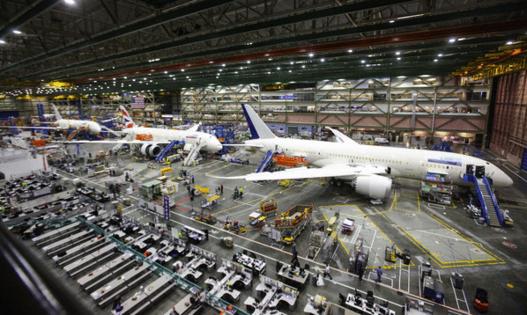Boeing plane deliveries dipped in July as company recovery rolls on
Published in Business News
Boeing delivered 48 planes in July, including 37 of its popular 737 Maxes, the company said in its monthly recap of orders and deliveries Tuesday.
That’s a dip from June — when Boeing reported 60 deliveries, including 42 Max planes — but in line with the company’s output for the earlier months of the year.
Between January and May, Boeing reported monthly delivery rates between 41 and 45 planes. It delivered 40 Max planes in January, before dropping its monthly Max delivery rate to around 30 per month from February to May.
Boeing’s July deliveries are higher than those in July 2024, when it recorded 43 total deliveries, including 31 Max planes.
That year was marked by a production slowdown after a panel flew off an Alaska Airlines 737 Max 9 plane in January 2024. Investigators later determined the panel came loose because it was missing crucial bolts meant to hold it in place, leading regulators to step up oversight of Boeing’s manufacturing practices
Boeing’s 737 Max deliveries are coming close to the Federal Aviation Administration’s production cap of 38 Max planes per month, put in place after the Alaska Airlines blowout. But there is not a direct comparison between planes produced and planes delivered.
The deliveries outlined in Boeing’s monthly report could include planes that had already been mostly complete and were waiting in storage for delivery. Boeing does not provide the breakdown of how many deliveries were produced, or “rolled out” of the factory, each month.
But in May Boeing said it had produced 38 Max planes, reaching the FAA’s production cap for the first time since it had been put in place.
In July, on Boeing’s quarterly earnings call, CEO Kelly Ortberg told investors the company expected to ask the FAA for permission to move beyond the production cap “in the coming months.”
Key metrics that Boeing outlined with the FAA to measure how well its production system is working are generally showing positive results, Ortberg said. But Boeing still has to reduce the number of hours of “rework,” or jobs that have to be redone because other tasks happened out of sequence, he said.
“We’re working that down and once we get that … where we need it, we’ll be having those discussions with the FAA” about increasing monthly production, Ortberg said.
In recent months, Boeing has also ramped up production of its 787 Dreamliner widebody plane.
It delivered eight 787s in July, compared with nine in June and seven in May. That’s a significant increase from four in January, five in February and four in March.
Last month, Boeing also delivered two 777 freighters and one 767 freighter.
Through the end of July, Boeing delivered a total of 328 airplanes this year, including 246 from the 737 family, 45 787s, 22 777s and 15 767s.
Boeing is lagging behind its European competitor Airbus, which delivered 67 planes in July and 373 from January through the end of the month.
Like Boeing, Airbus has to deal with supply chain constraints that can slow the pace of production. In July, Airbus said it had about 60 planes in inventory that were waiting for engines.
Last month, Boeing booked 31 gross orders, including 30 737 Maxes and one 787, all for unidentified customers. It also recorded one cancellation of a 787 by the Republic of Iraq.
Adjusting for strict accounting principles that move orders in and out of Boeing’s backlog, the aerospace manufacturer booked a total of 63 net orders in July.
Through the end of July, Boeing booked 699 gross orders for the year. Factoring in cancellations and accounting principles, Boeing’s net orders for the year total 739.
Boeing’s backlog at the end of July decreased from 5,968 to 5,953.
©2025 The Seattle Times. Visit seattletimes.com. Distributed by Tribune Content Agency, LLC.












Comments